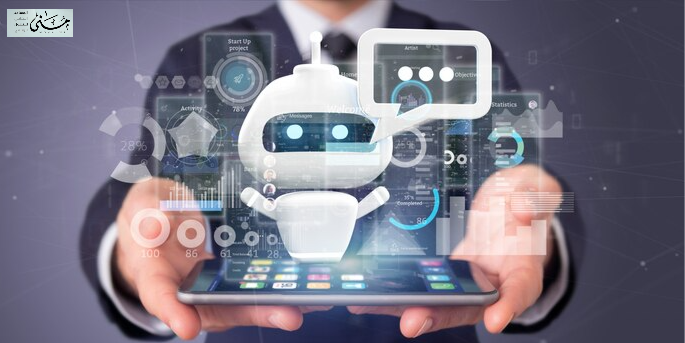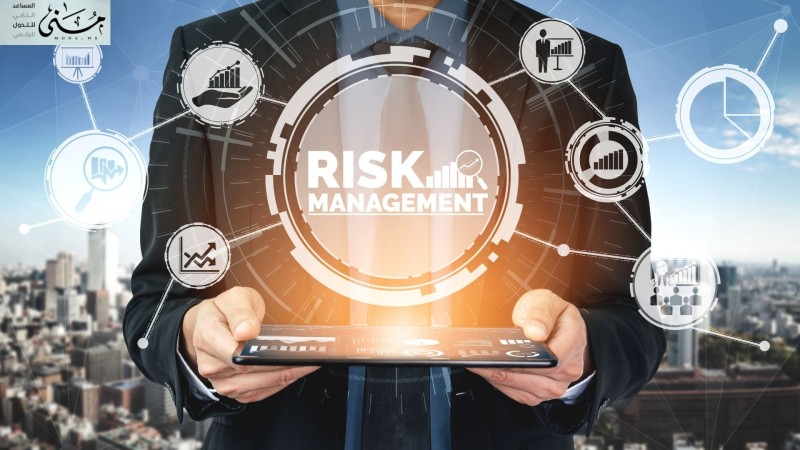At Mona News, we follow events moment by moment and provide readers with trustworthy information through a balanced and comprehensive perspective.
We strive to cover the latest local, Arab, and global developments in politics, economy, technology, society, and culture — focusing on in-depth analysis and transparency in reporting.
Our goal is to keep readers informed and help them gain a deeper understanding of the world around them through accurate content, clear language, and a journalistic vision built on credibility and professionalism.
🧭 What Is Data Security and Why Does It Matter?
In an era where information drives the economy, politics, and governance, data and information security is no longer a technical luxury but a strategic necessity that affects every individual, institution, and nation.
Every click online and every digital transaction leaves behind an information trace that can either be an asset or a threat — depending on how well it is protected.
Data security refers to a set of policies, procedures, and technologies designed to protect information from unauthorized access, alteration, loss, or theft.
Its importance lies in safeguarding three key principles:
-
Confidentiality: Preventing unauthorized access to data.
-
Integrity: Ensuring that information remains accurate and unaltered.
-
Availability: Guaranteeing that data is accessible when needed.
In both public and private sectors, information security forms the foundation of trust between users and systems. Any breach can lead to financial loss, reputational damage, and even the disruption of critical services.
🧱 Growing Challenges in an Interconnected Digital World
Today, the world lives in a highly interconnected digital environment, where networks intersect and systems exchange information at the speed of light. While this connectivity enhances efficiency and convenience, it also opens the door to increasingly complex and sophisticated security threats.
Below are the most pressing challenges facing data and information security today:
⚠️ Cyberattacks
Cyberattacks are among the most serious threats faced by governments, corporations, and individuals alike. They encompass a wide range of malicious tactics aimed at stealing data or disrupting services.
Common types include:
-
Ransomware: Malicious software that encrypts files and demands payment for their release. Such attacks have caused billions of dollars in global losses.
-
Phishing: Fraudulent emails or links designed to steal passwords or banking credentials.
-
System Hacking: Exploiting vulnerabilities in unpatched servers or outdated applications.
As these attacks grow in scale and sophistication, institutions are investing heavily in digital defense systems and forming cyber emergency response teams to react swiftly to any intrusion attempts.
🔐 Data Breaches
Data leaks represent one of the most damaging threats to organizational reputation and customer trust.
They occur when hackers or even internal employees gain access to sensitive information — financial, medical, or personal — and expose or sell it on the dark web.
In many cases, these breaches are not the result of external hacking, but of weak internal access control policies, allowing unauthorized employees to view sensitive data.
The best defense is to apply strict principles such as “Least Privilege Access”, ensuring users only have the permissions necessary for their specific tasks, combined with continuous monitoring to detect abnormal digital activity.
🧠 Malicious Artificial Intelligence
While artificial intelligence (AI) is revolutionizing data analysis and threat prediction, it also has a darker side — being used as a weapon.
Cybercriminals now leverage AI to:
-
Craft highly convincing phishing messages that are difficult to distinguish from legitimate ones.
-
Launch automated, precision attacks exploiting security loopholes in record time.
-
Generate adaptive malware that constantly changes to evade detection.
Reports indicate that the next wave of cyberattacks will rely on offensive AI — self-learning software capable of evolving to bypass traditional security systems.
This underscores the urgent need for developing defensive AI technologies that can counter such intelligent threats.
🧩 Weak Security Awareness
Despite major advancements in cybersecurity, the human factor remains the weakest link in most organizations.
Many breaches begin with a simple mistake — an employee clicking an unsafe attachment or sharing a password unknowingly.
Studies show that over 70% of security incidents are caused by human error or lack of awareness.
Thus, building a culture of cybersecurity awareness is just as important as deploying technical systems.
Regular training, education about social engineering tactics, and encouraging staff to report suspicious behavior can drastically reduce risk.
🛠️ Tools and Technologies for Information Protection
To counter these evolving threats, global technology and security agencies have developed a wide array of advanced solutions designed to build safer, more resilient digital environments. These tools form the defensive shield organizations rely on to protect their sensitive data and prevent breaches.
🔒 1. Encryption
Encryption is a cornerstone of modern data security. It transforms readable data into coded text that can only be decoded with authorized keys.
It is used both during data transmission and storage, ensuring that no unauthorized party can intercept or read it.
Protocols such as SSL and TLS have become essential in securing online banking, email, and digital communications.
🧱 2. Firewalls
Firewalls act as “gatekeepers” for digital networks, monitoring and filtering incoming and outgoing traffic to block suspicious connections.
They serve as the first line of defense against cyberattacks, whether originating from the internet or internal networks.
Modern firewalls now go beyond traditional filtering — using behavioral analysis and AI to detect unusual activity in real time.
🕵️♂️ 3. Intrusion Detection and Prevention Systems (IDS/IPS)
These systems act as the “eyes” of a network.
IDS tools identify and analyze suspicious activity, while IPS systems automatically take action to block potential threats.
They rely on large databases of known attack patterns and AI-based behavior analysis to recognize new and evolving threats, making them a crucial component in early threat detection.
🔑 4. Multi-Factor Authentication (MFA)
As passwords alone are no longer sufficient, multi-factor authentication adds a vital layer of security.
It combines multiple verification methods — such as passwords, fingerprints, or one-time codes sent to a phone — ensuring that only legitimate users gain access.
☁️ 5. Cloud Backup
No cybersecurity strategy is complete without regular data backups.
Cloud backup services allow organizations to securely store updated copies of their data on geographically distributed servers, ensuring quick recovery after an attack, system failure, or natural disaster.
Modern solutions perform automatic, encrypted backups, guaranteeing business continuity even in the toughest circumstances.
🧩 Information Security in Saudi Arabia
Saudi Arabia places great importance on information security as part of its Vision 2030.
The National Cybersecurity Authority (NCA) was established to set national policies and frameworks for protecting the Kingdom’s digital space.
Among its key initiatives:
-
The National Cybersecurity Strategy
-
Cyber Emergency Response Centers (CERT)
-
Training and capacity-building programs for national cybersecurity professionals
These efforts have positioned Saudi Arabia among the top-ranking countries globally in the ITU Global Cybersecurity Index.
🌐 The Citizen at the Heart of Digital Safety
Cybersecurity is not achieved by technology alone — it starts with user behavior.
Every individual plays a role in safeguarding digital safety by adopting simple but effective habits:
-
Avoid clicking unknown links or suspicious messages.
-
Keep systems and software regularly updated.
-
Use strong, frequently changed passwords.
-
Enable two-factor authentication for sensitive accounts.
🚀 Toward a Safer, Smarter Future
The world is rapidly moving toward using artificial intelligence and big data analytics to enhance cybersecurity systems.
Future solutions will rely on intelligent models capable of predicting attacks before they occur and analyzing user behavior to detect breaches proactively.
As digital transformation continues to expand in Saudi Arabia and across the region, data and information security remains the cornerstone of every successful digital initiative — from government services to financial and educational platforms.
✍️ In Conclusion
Data security is no longer a choice — it is a national and social obligation.
In today’s world, information is the new wealth, and those who protect it hold the keys to the future.









Comments
Add New Comment